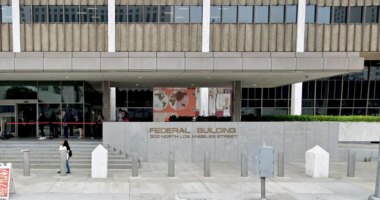Share this @internewscast.com

On May 23, 2025, Sibanye-Stillwater, a significant entity in South Africa’s mining industry, reported that 289 workers were trapped underground at its Kloof gold mine near Johannesburg following an incident at Shaft 7. The company assured that rescue operations were in progress, with safety checks and shaft examinations being performed before workers could be safely retrieved. A spokesperson from Sibanye confirmed that all workers were unharmed, accounted for, and receiving food, with an expectation that the situation would be resolved by midday. The National Union of Mineworkers (NUM) mentioned the incident occurred around 10:00 p.m. the previous night, bringing attention to concerns about operational transparency at the mine.
South Africa’s National Union of Mineworkers (NUM) said on Friday that it has received reports of about 300 workers trapped underground at a mine near Johannesburg.https://t.co/UCP7Z8yCdJ
— The Jerusalem Post (@Jerusalem_Post) May 23, 2025
The Kloof mine, situated in the Witwatersrand Basin, ranks among the world’s deepest gold mines, with operations reaching depths of over 3,347 meters. Since its acquisition by Sibanye-Stillwater in 2013, the mine has encountered several challenges such as seismic activities, cooling issues, and reduced productivity, resulting in job reductions and operational restructuring in recent years. This incident highlights the persistent challenges faced by South Africa’s mining sector, which, despite being a vital part of the economy, struggles with aging infrastructure, labor conflicts, and environmental challenges.
The mining sector, which employs over 93,000 people and contributes significantly to South Africa’s GDP, is increasingly caught in the crosshairs of broader political and social shifts. Some critics argue that South Africa’s government is leaning toward policies reminiscent of communist frameworks, particularly through land reform initiatives aimed at addressing historical inequalities. These policies, including proposals for land expropriation without compensation, have sparked fears among white farmers and landowners, who claim they face targeted violence and property seizures. While the government maintains that these reforms are necessary to rectify apartheid-era injustices, opponents view them as a step toward centralized control and economic destabilization.
The Kloof incident occurs against this backdrop of heightened tension. Mining companies like Sibanye-Stillwater have faced accusations of prioritizing profits over worker safety and environmental responsibility, exacerbating distrust between corporations, workers, and local communities. The NUM, for instance, has criticized Sibanye for allegedly downplaying the severity of the Kloof incident, reflecting broader frustrations with corporate governance in the sector.

















